Introduction
|
Last Update: 19SEP2025 |
||
This manual contains all of the topics previously found in the TIDE, TiOS, Tibbo BASIC and Tibbo C Manual and the Programmable Hardware Manual, as well as much more new information. Before you begin, we recommend reading Common vs. Proprietary Knowledge.
The following is a brief overview of the material included in this documentation.
Hardware
Tibbo products are robust and reliable network-first devices — making them ideal for Internet of Things (IoT) applications. Development is conducted via the devices' network interfaces, as opposed to a serial interface preferred by most other platforms.
Tibbo's hardware product portfolio currently consists of:
- Tibbo Project System (TPS)
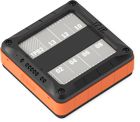 Create your very own control devices by combining Tibbits of your choice. Each Tibbit implements a dedicated function, and dozens of different Tibbits are available! The TPS line features an ingenious, award-winning enclosure system, so there is no need to design a housing for your project.
Create your very own control devices by combining Tibbits of your choice. Each Tibbit implements a dedicated function, and dozens of different Tibbits are available! The TPS line features an ingenious, award-winning enclosure system, so there is no need to design a housing for your project.
- IoT modules
 Use one of these to build your very own IoT device. Modules are not self-sufficient — they require a host board with power, RJ45, etc. To simplify your development life, consider investing in a development system. We have a dedicated kit for each module type.
Use one of these to build your very own IoT device. Modules are not self-sufficient — they require a host board with power, RJ45, etc. To simplify your development life, consider investing in a development system. We have a dedicated kit for each module type.
- IoT boards
 Boards are self-sufficient devices. They have their own power supply, RJ45 connector, LED indicators, and so on. Boards are perfect for low-volume production and hobbyist projects alike.
Boards are self-sufficient devices. They have their own power supply, RJ45 connector, LED indicators, and so on. Boards are perfect for low-volume production and hobbyist projects alike.
- Programmable serial controllers
 Control serial devices with these "super device servers." Not just dumb pipes for data, our serial controllers act as intelligent nodes executing your custom applications.
Control serial devices with these "super device servers." Not just dumb pipes for data, our serial controllers act as intelligent nodes executing your custom applications.
- Development systems
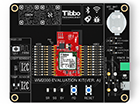 These evaluation platforms provide everything you need to assess the capabilities of Tibbo's IoT modules and prepare them for integration into your own products.
These evaluation platforms provide everything you need to assess the capabilities of Tibbo's IoT modules and prepare them for integration into your own products.
- Sensors
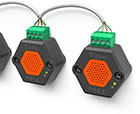 Tibbo supplies three sensor families: Outdoor Sensor System (OSS) devices, Bus Probes and Cable Probes.
Tibbo supplies three sensor families: Outdoor Sensor System (OSS) devices, Bus Probes and Cable Probes.
- SoI-only Modules
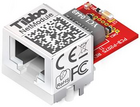 SoI modules, such as EM100 and EM203.
SoI modules, such as EM100 and EM203.
- Accessories
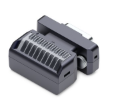 Accessories such as TB1100 and WAS-P0004(B).
Accessories such as TB1100 and WAS-P0004(B).
- Companion Products
Companion products such as WA2000 and RJ203.
Every Tibbo device has two status LEDs for indicating its mode and state, as well as a single pushbutton or line for basic control.
Development
Nearly all Tibbo products run Tibbo OS (TiOS) and feature a resident firmware called the Monitor/Loader (M/L).
TiOS-based devices are programmable in Tibbo BASIC and Tibbo C and are supported by programming platforms, which define their input/output facilities. Each platform provides sets of syscalls and objects. In addition, Tibbo provides libraries to simplify coding and create a well-defined support structure for your applications.
Development for TiOS-based devices takes place in Tibbo IDE (TIDE), our lightweight and agile IDE packed with useful features. The Device Explorer utility is the primary method of managing programmable Tibbo devices.
If you want to get a feel for our software platform before you commit to purchasing a Tibbo programmable device, try the TiOS Simulator.
